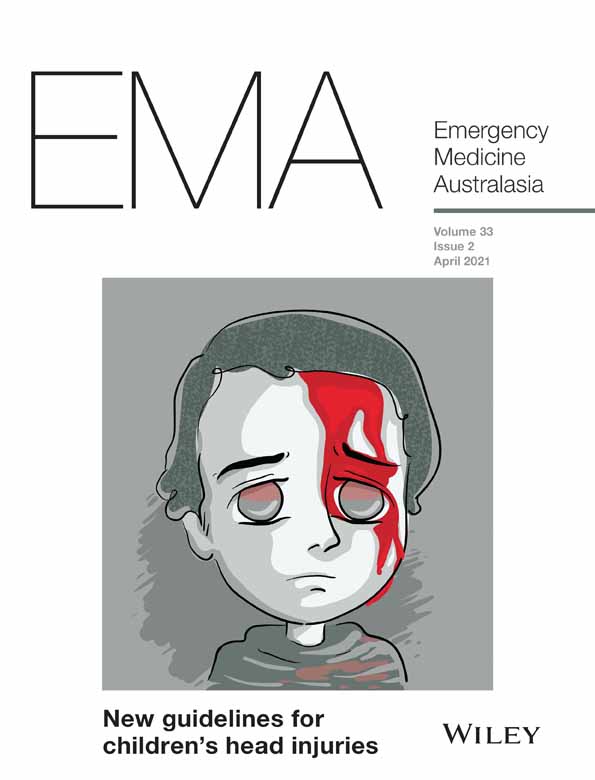In this April issue
Children's head injuries
The Paediatric Research in Emergency Departments International Collaborative (PREDICT) recently released the Australian and New Zealand Guideline for Mild to Moderate Head Injuries in Children in 2021. These are highly significant guidelines that will be of practical benefit to many clinicians and not just in Australasia; publication day was accompanied with widespread mainstream media coverage. We publish two papers from PREDICT, together with an editorial.
Time-based targets
Long waits for assessment and admission to hospital from EDs are a global problem and contribute to ED crowding and clinical adverse outcomes. To address this, some jurisdictions introduced time-based targets (TBTs) for ED length of stay, beginning with the UK in 2004. To date, there has been no synthesis of qualitative research on the impact of TBTs. Compared to individual qualitative studies, a systematic review improves external generalisability of the qualitative research to other settings. This better informs conversations about whether TBTs are beneficial. We publish an excellent paper that evaluates qualitative evidence to see if ED TBTs have influenced the quality of care.
Managing children and adolescents with MH concerns
Does an innovative clinical pathway for managing child and adolescent MH ED presentations reduce average length of stay and improve carer satisfaction. A team from the Hunter New England Local Health District present us with a study that provides valuable information about the benefits of such a pathway. It reduces the length of stay in ED and improves carer experience compared to the usual care pathway.
Psychotropic medication for children with MH problems in an ED
Continuing with the same theme, there is limited evidence for psychotropic medication use in children and adolescents presenting with MH problems to the ED. A team from the Royal Children's Hospital in Melbourne conducted a retrospective electronic medical record review of ED patients with MH discharge codes at a tertiary paediatric ED in 2018 and then assessed the epidemiology and management of patients who received a psychotropic medication. A minority of children with MH presentations to the ED were medicated. It will require multicentre research to determine the most effective and safe acute psychotropic agents for oral and parenteral use in children in the ED.
MH presentations to an ED during COVID lockdown
Christchurch Hospital presents us with the data for mental health presentations to its tertiary ED during New Zealand's national COVID-19 lockdown in 2020, with a retrospective comparative cohort study.
Laceration suture repair outcomes in ED
A team from Victoria offer a neat (no pun intended) prospective observational study of adult patients with lacerations sutured in two EDs over a four-month period. ED data included participant demographics, laceration characteristics and management with a telephone survey undertaken approximately 14 days post-ED discharge. Patient satisfaction with post-ED pain management, advice on wound care and follow-up, overall management, and wound cosmesis were evaluated using a six-item satisfaction scale (very dissatisfied to very satisfied). Most patients were very satisfied with their laceration management. However, there is scope for improvement, especially for follow-up and wound care advice. Complications are infrequent and not associated with overall satisfaction.
Non-urgent ED presentations in the Philippines
We publish an interesting study that reports factors associated with non-urgent consultations in the ED of a tertiary hospital in the Philippines. Non-urgent consultations are attributed to multiple factors encompassing sociodemographic, socioeconomic, and psychosocial dimensions. These factors must be considered in improving the current healthcare management system for the appropriate use of ED in the Philippines.
The cognitive bias of cognitive bias
We recently published a set of papers discussing cognitive bias. George Douros, from Austin Health, wisely reminds us that increased awareness of the cognitive biases of clinical decision making over the last decade has not resulted in a corresponding decrease in clinician error. The inappropriate use of cognitive bias labels in adverse incident reviews can result in unintentional or intentional blame.
Trainee Focus
This issue of the focus is on simulation in emergency medicine.




